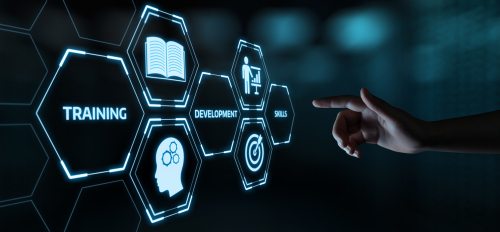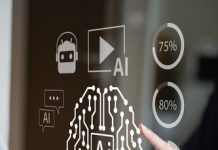Training works best when it’s personalized to the learner.
Unfortunately, the challenge for sales and enablement leaders is that individualizing the skill development and learning process is resource intensive. Each seller has a unique set of needs. Addressing all of them just isn’t feasible. However, with an understanding of a few key psychological concepts behind learning, leaders have a chance to redevelop the sales training process in a way that meets every seller where they are and helps them get to where they need to be.
Solving the personalization problem in sales training has never been more important. Recent research from Gartner shows that 83% of sales leaders agree that their sellers are not successfully adapting to the customer’s new needs and expectations. Personalization equips sellers with perhaps the strongest competitive advantage available.
Here, we explore the research revealing the three fundamental psychological principles that form the basis of an individualized sales training program that any leader can implement.
The Power of Consolidation
Personalized learning recognizes the seller’s existing capabilities. Therefore, the training is focused on the seller’s specific knowledge and skill gaps without including material that’s already within the seller’s range of competency.
Traditional approaches lack this feature and often deliver a full suite of content that requires the seller to isolate what’s relevant from what is not. That process only adds to the already considerable challenge of building new skills. A personalized approach is additive because the new skill often makes the current ones more effective. Consider, for example, a seller who already has the ability to access power in the buying organization but lacks the capability to drive consensus. Without the critical skill of creating consensus, the seller’s ability to access power is of little use. With personalized learning, the seller can get more out of their existing skill – accessing power – by developing the skills they’ll need once they’re in front of the decision-makers.
In the science of learning, this concept is called consolidation. The authors of “Make It Stick: The Science of Successful Learning” explain that “knowledge is more durable if it’s deeply entrenched” when the concept is “connected with other knowledge that you hold in memory.” They also explain that “prior knowledge is a prerequisite for making sense of new learning.” Personalized learning uses this principle.
Focusing on Situational Interest
Sellers are more receptive to learning that addresses the specific skills they need to be successful. Earning their buy-in to ongoing training means showing them that what they’ll learn will have a direct impact on the outcome of the opportunities they’re pursuing.
This kind of instruction is an improvement over the more common method of deploying a broad set of selling skills across a team consisting of different roles, needs and pursuits.
The idea of personalizing learning to what is relevant to the learner – their “situational interest” – has been shown to create a “state of heightened attention and increased engagement,” according to research published in the Journal of Educational Psychology. Pertinent content offers high “utility value,” according to the researchers. The authors explain, when learners “are interested in a task or activities, they engage longer and with more effort and productive learning behaviors, including generative questioning, self-regulation, deep strategy use, and problem-solving.”
Further research from the Journal of Educational Psychology explores the idea that personalized learning is effective because it engages the learner on three levels:
- Depth – Personalized learning is effective because it relates to the individual’s deeper interests and connecting with the learner’s deep interests means delivering content that addresses their specific skill gaps.
- Grain Size – Grain size refers to how well the learning is customized to the unique experiences of the learner. When learning content is designed with an awareness of the seller’s role, it has a finer “grain” and is more effective.
- Ownership – Greater ownership drives learning. Ownership refers to the learner’s role in connecting the content to their goals. Personalized learning allows sellers greater ownership because they can see the impact of applying newly acquired capabilities to current pursuits.
Context-Aware Content
Personalized learning is immediate because it serves the seller where they are by delivering the capabilities they need when they need them.
This immediacy makes the skill development process effective because the seller can put the new skill to work as soon as they learn it. This learning style is more engaging than an intermittent approach in which sellers, as a group, are expected to occasionally step away from selling to train. In this setting, the connection between the skill and the sale is lacking. When learning is personalized, it’s context- aware and, therefore, can address the competency that’s most relevant to the moment.
This concept might explain why the study, “Continued Progress: Promising Evidence on Personalized Learning” from the RAND Corporation, found that those engaged in personalized learning made greater progress over two years than their peers.
Learning that is immediate also allows individuals to engage in shorter periods of instruction because the learning is intended to address a specific need. This short-form style is part of what makes the capabilities last. Research originally published in Scientific American showed that continuous learning consisting of shorter engagements boosted recall by 20% compared to those relying on long-form learning requiring more attention for longer, sustained periods.
A Five-Step Process for Making Personalized Learning Work
The research is clear: Personalized learning works. What is less clear is how to make it work at scale. How can sales and enablement leaders create a system that delivers an adaptive learning experience to all sellers? The answer is the following five-step process:
1. Isolate the Behaviors That Are Most Influential to Success
Before personalizing the skill development process, leaders need to isolate the specific capabilities that drive wins. This task begins by clarifying the lagging indicators organizations want to achieve. This process happens in three parts:
- The company must identify their goal lagging indicators. That is, what metrics do the leaders want to examine in the next 12 to 24 months when determining if they have been successful?
- Leaders must consider the leading indicators showing that the organization is progressing towards the lagging indicator. This approach is simply the process of starting at the end and working backward to understand how to reach that point.
- Leaders must identify the selling behaviors most influential to these indicators. This approach converts the strategy into precise, individual capabilities.
2. Identify Skill Gaps by Assessing Sellers
Once the metrics and crucial behaviors are clear, it’s time to assess your sellers against them. To understand individual needs, each seller must undergo a capability assessment to benchmark their current skills and behaviors against a clear definition of “good.”
Importantly, this assessment should combine behavioral assessment questions and the seller’s performance metrics so that real-world results are folded into the picture, allowing objective data to inform the assessment.
3. Communicate Progress
Perhaps the most important step in the process is to start the seller’s learning journey by clearly showing them how they did on their assessment, what behaviors and skill gaps they have so they know where to focus, and how those skills are linked to their metrics.
This process drives engagement and buy-in from the start. By showing an individual picture of improvement needs linked to their own targets, sellers can easily see what is in it for them to begin investing time in improving skill and behaviors.
4. Develop a Personalized Learning Journey
The results should then inform a personalized learning path for each seller. Personalized learning works best when several criteria are present:
- The recommendations are clearly linked to a seller’s individual metrics
- The path is filled with a mix of intentional modalities including live coaching, self-paced learning, RevTech stack enabled tools, digital sustainment learning assets, and video role-play.
5. Follow Up On the Results
Learning should always be on and the visibility of improvement efforts should be continuous. After completing a learning path on a specific behavior or set of behaviors, sellers should be shown their results both in terms of learning and their impact on their own performance metrics.
Doing so provides incentive to keep going, keep improving. And your data should continue to reveal the next set of prioritized behaviors and skills to improve and the next personalized learning path for each seller. This progression is how you build a culture of continuous improvement.
Personalized learning works because it builds on the seller’s base of knowledge while delivering relevant skills that can be applied to current opportunities.
Richardson is how leading sales organizations around the world are getting better results from their investment in sales training. For far too long, companies have had to deal with a big disconnect between their training and their real results in the field. We connect metrics to behaviors, training to outcomes and sellers to their best performance.





